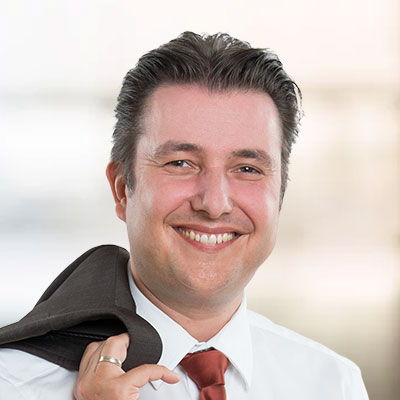Interview ISG Training & Development, Part 2

Mag. Alfred Schaider – trainer, team developer, coach
, +43 664 856 42 33

In the second part of the interview series, the trainer, team developer and coach Alfred Schaider reports on the changes
that have accompanied the pandemic in the area of personnel development & training, which new virtual offers have
been developed and why New Ways of Learning will play an important role.
In the first part of the interview series, you mentioned that you and your colleagues are always in contact with customers. How does this work in times of the pandemic?
Basically, there is no difference compared to customer contact in times before Corona. We had a lot of phone calls before the pandemic, which has resulted in our customers being used to coordinating in virtual meetings. In this respect, the contact was never lost – it was even intensified. We approached our customers proactively from day one and were able to continue and start many projects.
What changes has the pandemic brought about in the area personnel development & training?
We are 25 ISG trainers, scattered across the country, and have moved together even closer. We have always maintained a virtual work culture, but this has intensified and consolidated as a result of the pandemic. When the lockdown was announced in mid-March 2020, we converted our entire service portfolio in the areas of personnel development and training within one day, so that we were able to present our new virtual products on the first day of the lockdown. On this very day I received the first request for a virtual coaching.
Some of our trainers have already had experience in virtual training, one colleague trained in blended learning mode 20 years ago. So, we had the right mindset from the start and saw the situation and the associated virtualization as an opportunity. It used to be an exception to train virtually, now it is the rule.
To what extent have offers been adapted and which new offers have emerged?
First of all, I will give an explanation of the changes that virtual training has brought about.
In face-to-face events, the trainer usually spends one or two days with a group and thus has more time to use the group dynamics and exchange. In an online setting you can train for a maximum of four to six hours, this is due to the fact that although it is designed to be very interactive, it quickly becomes exhausting for the participants. That means things have to be brought to the point faster. Interaction must be encouraged with virtual, interactive group work; the participants must be addressed directly. The whole thing is divided into smaller “snack-size” nuggets by dividing the larger blocks into subject areas. I would also like to mention that the design is very dependent on the customer. We pay attention to what the culture of the company is, what topic it is and how the employees interact, etc.
In the course of the pandemic, a large number of new offers were created, which are basically guided by the following questions: How can you work from home in the best possible way, how do you organize your own home office in connection with the ideal setting of the workplace and how do you continue to communicate with your colleagues etc. This is how the topics of smart working and virtual collaboration, for instance virtual collaboration within the team, are structured. That is also why questions arose from the executives: How do I stay in contact with the employees, how do I capture the mood of the employees and how do I maintain the spirit – hence we have also created a new offer, virtual management, for the best possible support in this field.
Other offers are about virtual selling, successful virtual sales and sales strategies, or professional customer communication. How do you best stay in contact with customers, how do you moderate meetings or how do you train over distance? The last points are conveyed in our offer virtual meetings.
Our diagnostics department offers online assessment and online development needs analyses for virtual work.
Of course, there are some companies that have always worked this way, but for many teams, and especially for executives, it is a whole new culture that has developed through the pandemic and needs to be nurtured.
I do not think that we will return to solely face-to-face seminars, except for companies that have a face-to-face culture. In my opinion it will be a mixture of analog and digital methods, which is also part of New Ways of Learning.
What do you mean by New Ways of Learning?
Blended learning, smart learning, webinars – these are new ways of learning that are participant-oriented and personalized in order to enable each participant to pursue their own learning journey.
My colleagues Claudia Wallner and Karin Wahl will present more about this topic in another interview.
Has this change made the preparations more intensive?
Preparing tailor-made projects has always been very labor-intensive, but the effort involved in the virtual seminars has doubled. However, there are always advantages and disadvantages. To believe that everything from a face-to-face seminar can be implemented 1:1 in a webinar is the greatest fallacy.
How do you think the future of personnel development & training will change?
I think it will be a healthy mix. A personal meeting will be unavoidable for dealing with some topics, for example where you have to create intense emotional group dynamics or these already exist, such as in very conflict-laden moderations or in situations in which people have to grow together quickly.
In addition, emotions can never be conveyed so well virtually. Training programs will increasingly combine the best of both worlds. Finding a good mix will be the challenge in the future.
